If you spend even a little time exploring northern Thailand you’ll quickly realize something: temples are everywhere. And not just little roadside shrines—though there are plenty of those —but jaw-dropping, intricately adorned, golden-topped, dragon-guarded temples. They are stunning. Peaceful. Majestic. And after your fifteenth one in two days, you might just find yourself getting templed out!
One of the most surreal things about traveling through northern Thailand is stumbling upon a jaw-dropping temple in what feels like the middle of nowhere. On multiple road trips we have been driving through a dusty rural village, surrounded by rice paddies and tin-roof homes—and then, BAM! a gleaming, white-and-gold temple rises like a mirage, complete with intricate carvings and of course a golden Buddha. It feels almost like it was dropped there by a movie set crew. It’s a testament to just how deeply Buddhism is woven into Thai life, even in the smallest communities.
Buddhism 101: What You Should Know
Buddhism in Thailand is practiced (at least culturally) by around 93–95% of Thais. Of those, only 30–40% actively practice—meaning they regularly participate in rituals. Still, Buddhism shapes everything from how people interact to how they mark milestones in life.
So who is Buddha? Contrary to what some think, Buddha isn’t a god. He was a prince-turned-wandering seeker who lived over 2,500 years ago and reached enlightenment through meditation and insight. In Thai culture, Buddha is revered as a wise teacher who showed the way to escape suffering through mindfulness, compassion, and letting go.
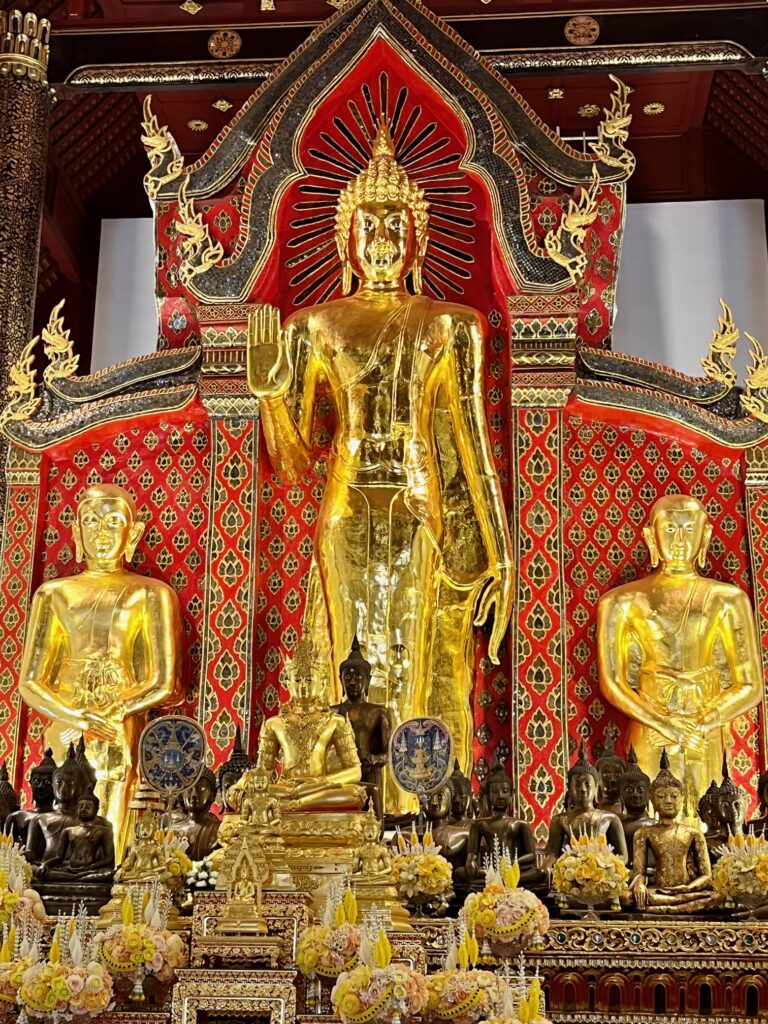
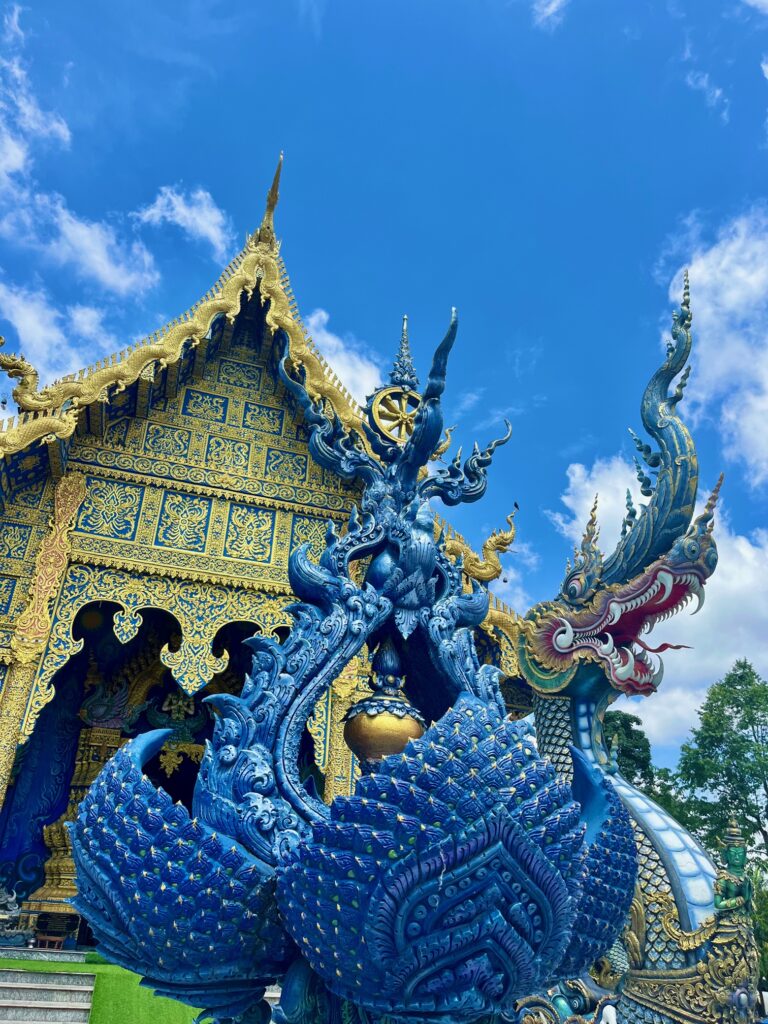
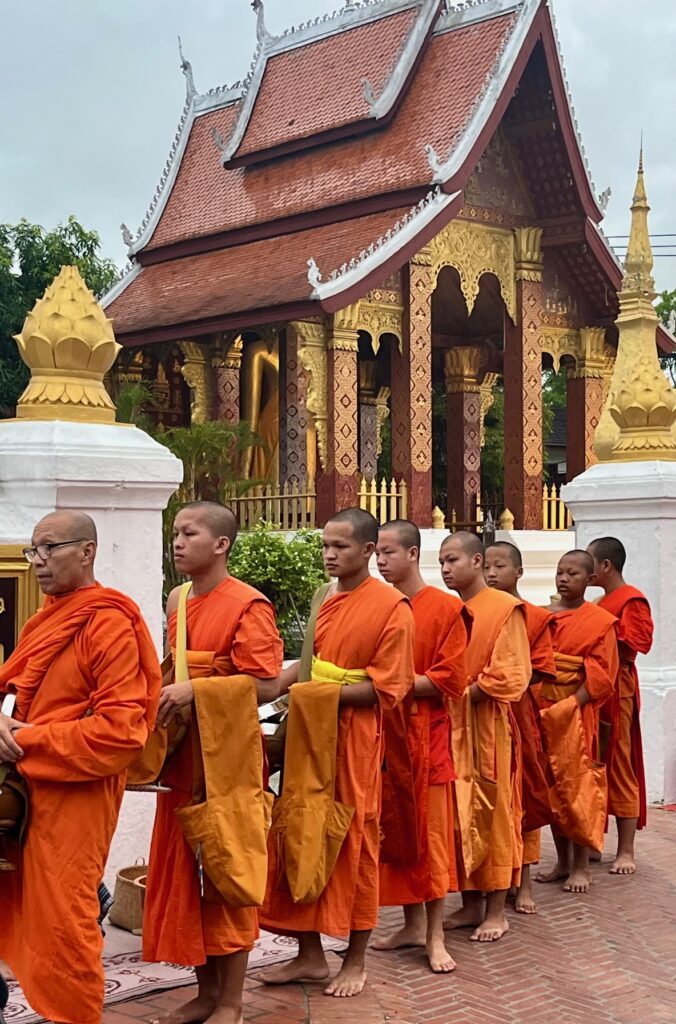
Monks: The Saffron-Clad Guardians of Thai Spirituality
In Thailand, monks are everywhere—shopping at 7-Eleven (seriously), leading temple ceremonies, or walking barefoot at dawn collecting alms. They live simple lives devoted to spiritual practice and are deeply respected by the community. Fun fact: Most Thai men are expected to become monks for at least a short time—often just a few months. It’s a rite of passage that brings honor to the family and gives men a foundation in Buddhist values before they move on to other phases of life. Thailand has approximately 300,000 ordained monks at any given time. This number can fluctuate due to the Thai tradition of temporary ordination, where many men become monks for a short period—often during school breaks, before marriage, or as part of a rite of passage. Additionally, Thailand has around 10,000 to 15,000 Buddhist nuns.
Temple Tips: How to Be a Respectful Visitor
Visiting temples in Thailand is on the most do list for travelers —but it also comes with some important etiquette. Temples ( called wats) are sacred, not just beautiful photo ops, so respect is a must. Women must dress modestly by covering your shoulders and knees—in order to not tempt the monks (requires a little pre thought since is it hot and humid). Also everyone needs to remove your shoes before entering the temple buildings. One lesser-known rule is to be mindful of your feet—don’t point them toward Buddha images or monks, whether you’re sitting or stretching out to rest. Feet are considered the lowest and least clean part of the body in Thai culture, so tucking them behind you or sitting cross-legged is best.
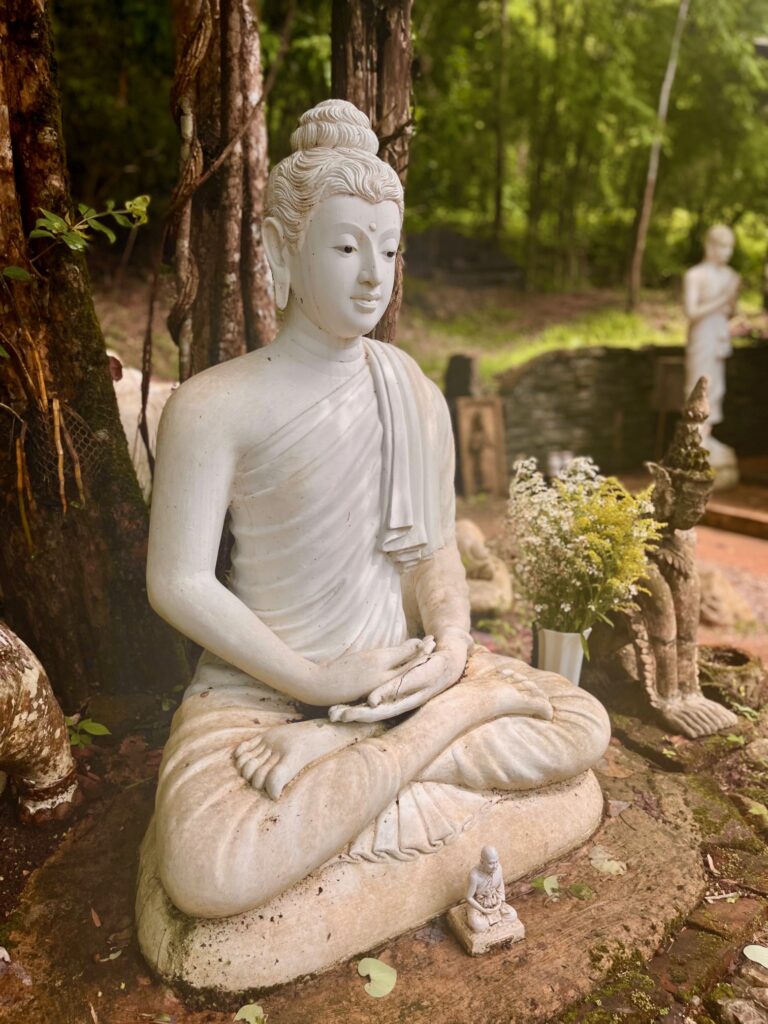
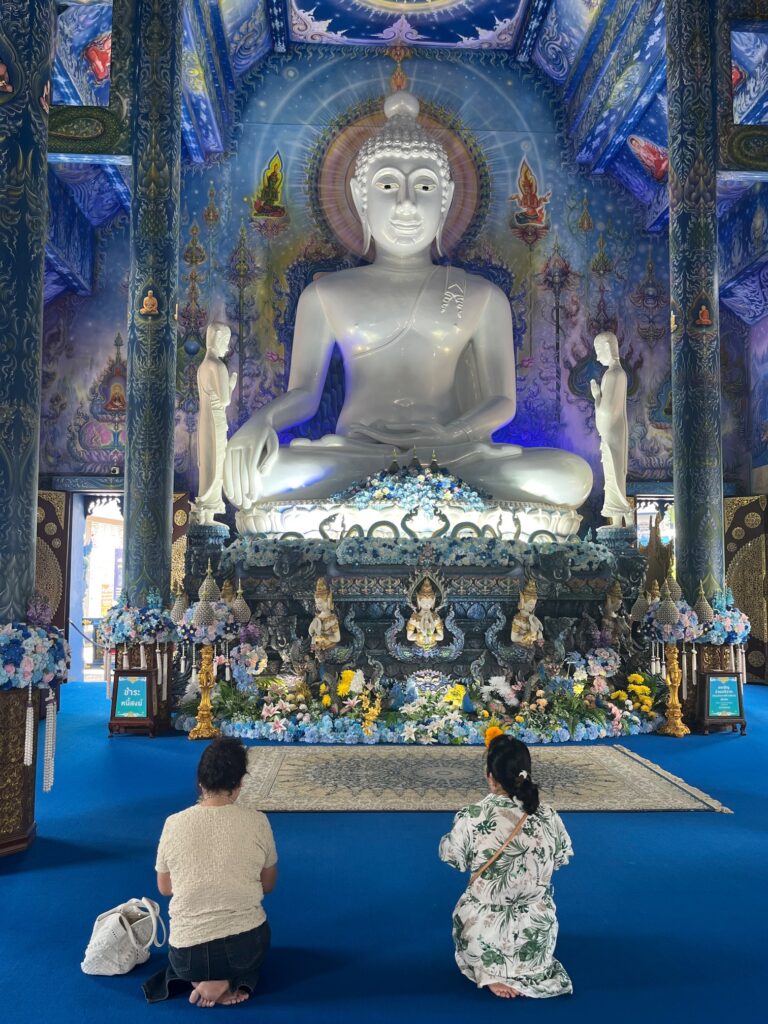
Your Birth Day Has a Color and a Buddha Pose
One of my favorite quirky details about Thai Buddhism? Every day of the week has a corresponding Buddha image and color. People are often very aware of the day they were born and will wear that day’s color for luck. (I didn’t even know what day I was born—Greg had to look it up for me!). Here’s a quick snapshot:
| Day | Buddha Pose | Color |
|---|---|---|
| Sunday | Buddha in meditation | Red |
| Monday | Standing Buddha with raised hand | Yellow |
| Tuesday | Reclining Buddha | Pink |
| Wednesday (Day) | Buddha holding an alms bowl | Green |
| Wednesday (Night) | Reclining Buddha | Grey |
| Thursday | Meditative Buddha | Orange |
| Friday | Contemplative Buddha | Blue |
| Saturday | Seated Buddha protected by Naga | Purple |
It’s a fun and meaningful tradition—and you’ll even see people making offerings to their “birth Buddha” at temples.
